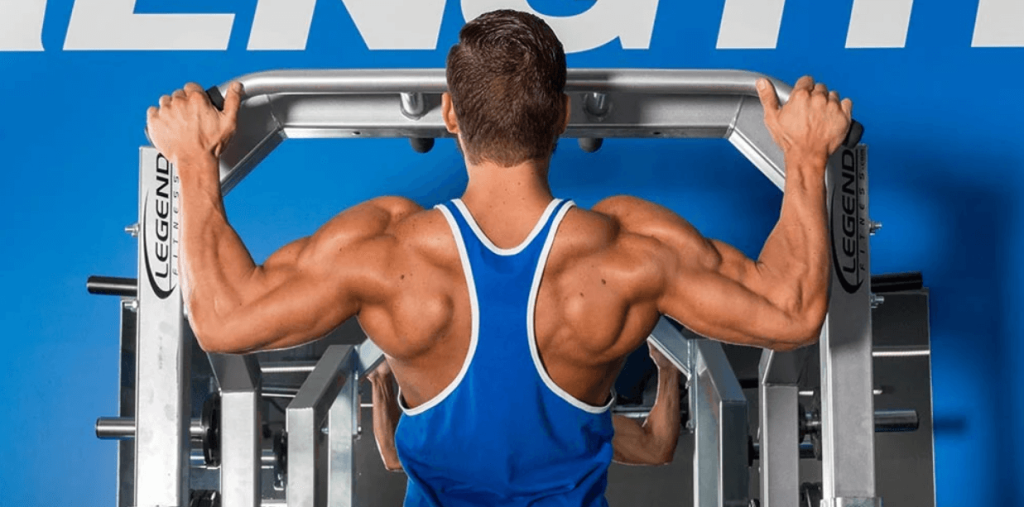
When it comes to achieving weight loss and muscle gain, incorporating the right exercises into your fitness routine is crucial. The ideal workout regimen should strike a balance between cardiovascular exercises that burn calories and strength training exercises that build muscle mass. Cardiovascular exercises such as running, cycling, swimming, or high-intensity interval training (HIIT) are excellent for burning calories and improving overall fitness. These activities elevate your heart rate, leading to increased fat burning and weight loss.
In addition to cardio, strength training exercises are essential for muscle gain. Resistance training, including weightlifting, bodyweight exercises, or using resistance bands, stimulates muscle growth and helps to shape your physique. Compound exercises like squats, deadlifts, bench presses, and pull-ups engage multiple muscle groups simultaneously, maximizing efficiency and effectiveness. It is essential to gradually increase the intensity and resistance of your workouts to continue challenging your muscles and promoting further growth.
To optimize your weight loss and muscle gain goals, it’s recommended to combine both cardiovascular exercises and strength training exercises into your routine. Additionally, maintaining a balanced diet and ensuring adequate rest and recovery are crucial for achieving optimal results. Remember to consult with a fitness professional or healthcare provider to tailor a workout plan that suits your specific needs and goals.
Best Exercises for Weight Loss
When it comes to weight loss, incorporating exercises that burn calories and promote fat loss is essential. Here are some of the best exercises for weight loss:
1. High-Intensity Interval Training (HIIT)
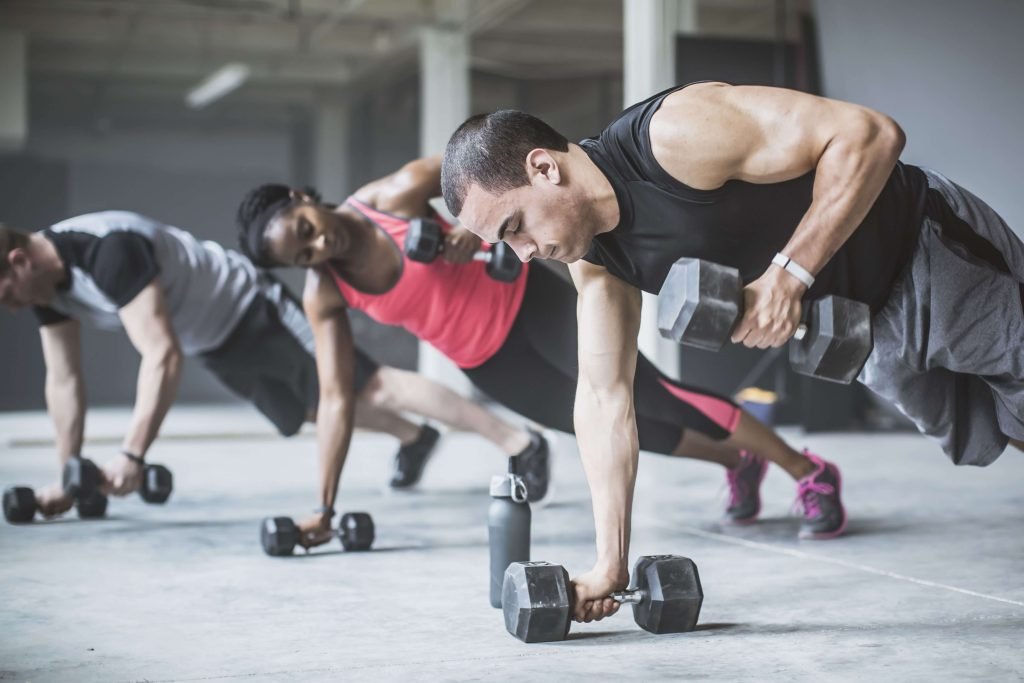
High-Intensity Interval Training (HIIT) is a popular and effective form of exercise for weight loss. It involves short bursts of intense exercise alternated with periods of rest or lower-intensity activity. The intense intervals push your body to its limits, while the rest periods allow for recovery. This cycle is repeated for a set duration, typically ranging from 10 to 30 minutes.
One of the key benefits of HIIT is its ability to maximize calorie burn in a shorter amount of time. The high-intensity exercises elevate your heart rate and metabolism, resulting in a significant calorie expenditure both during and after the workout. This phenomenon is known as the “afterburn effect” or excess post-exercise oxygen consumption (EPOC), where your body continues to burn calories at an elevated rate even after you’ve finished exercising.
HIIT workouts can be tailored to individual fitness levels and preferences, making them accessible to beginners and advanced athletes alike. You can choose from a wide variety of exercises, including sprints, burpees, squat jumps, high knees, and more, depending on your fitness goals and equipment availability. HIIT can be performed using bodyweight exercises, gym equipment, or even cardio machines like treadmills or stationary bikes.
In addition to its calorie-burning potential, HIIT has been shown to improve cardiovascular fitness, increase muscle endurance, and promote fat loss while preserving lean muscle mass. It also offers the advantage of keeping your workouts engaging and exciting, as the intervals provide a sense of variety and challenge.
However, it’s important to approach HIIT with caution, especially if you’re new to exercise or have any underlying health conditions. The high-intensity nature of the workouts places significant stress on your body, so it’s crucial to ensure proper form, warm-up adequately, and listen to your body’s limits. It’s advisable to consult with a fitness professional or healthcare provider before starting a HIIT program to determine if it’s suitable for you and to receive guidance on structuring your workouts appropriately.
Overall, HIIT is a time-efficient and effective exercise strategy for weight loss, offering a combination of intense cardiovascular exercise and fat-burning potential. By incorporating HIIT into your fitness routine, you can optimize your calorie burn, improve your overall fitness level, and achieve your weight loss goals.
2. Running and Jogging

Running and jogging are classic forms of aerobic exercise that are highly effective for weight loss. They offer numerous benefits for both physical fitness and overall well-being.
Running and jogging are accessible to most people, as they require minimal equipment and can be done almost anywhere. Whether you choose to run on a treadmill, around your neighborhood, or in a nearby park, these activities provide a convenient way to incorporate exercise into your daily routine.
One of the primary advantages of running and jogging for weight loss is their ability to burn a significant number of calories. These activities engage multiple large muscle groups in your legs, glutes, and core, leading to increased energy expenditure. The exact number of calories burned depends on factors such as speed, distance, and body weight, but running at a moderate to vigorous intensity can help you achieve a substantial calorie deficit.
Additionally, running and jogging have a positive impact on cardiovascular fitness. Regular participation in these activities strengthens your heart, improves lung function, and enhances overall cardiovascular endurance. As a result, your body becomes more efficient at utilizing oxygen and transporting it to your muscles, allowing you to exercise for longer durations and at higher intensities.
Another benefit of running and jogging is their impact on mental well-being. Engaging in these activities releases endorphins, which are natural mood-boosting chemicals that can alleviate stress, reduce anxiety, and enhance overall mental clarity. Many people find running and jogging to be a form of stress relief and a way to clear their minds.
It’s important to note that starting a running or jogging routine should be approached gradually, especially if you’re new to these activities or have any underlying health conditions. Begin with shorter distances and slower speeds, gradually increasing your intensity and duration over time. Warming up, stretching, and wearing proper footwear are also essential for injury prevention.
To maximize weight loss benefits, consider incorporating variations into your running routine. For example, you can include interval training by alternating between periods of higher intensity running and slower recovery jogs. This approach challenges your body, increases calorie burn, and helps improve your overall fitness level.
In conclusion, running and jogging are excellent exercises for weight loss due to their ability to burn calories, improve cardiovascular fitness, and positively impact mental well-being. With consistency, proper form, and gradual progression, these activities can contribute significantly to your weight loss journey while providing a host of other health benefits.
3. Cycling

Cycling is a highly effective exercise for weight loss that offers a range of benefits for both physical fitness and overall well-being. Whether you prefer cycling outdoors or using a stationary bike indoors, this low-impact activity provides an excellent cardiovascular workout that can contribute to significant calorie burn and fat loss.
One of the advantages of cycling for weight loss is its ability to be easily adjusted to different fitness levels and goals. You can control the intensity of your cycling sessions by adjusting the resistance or terrain, allowing you to customize your workouts to match your current fitness level. This makes cycling suitable for beginners as well as advanced athletes.
Cycling is a great calorie-burning exercise, particularly when done at a moderate to high intensity. The continuous pedaling engages multiple muscle groups, including the legs, glutes, and core, leading to increased energy expenditure. The number of calories burned during a cycling session depends on factors such as speed, duration, resistance, and body weight. On average, cycling can help burn around 400-600 calories per hour, making it an effective option for weight loss.
Furthermore, cycling has a positive impact on cardiovascular health. Regular cycling strengthens your heart, improves blood circulation, and enhances overall cardiovascular endurance. This not only supports weight loss efforts but also contributes to a healthier cardiovascular system, reducing the risk of heart disease and other related conditions.
Cycling is a low-impact exercise that puts minimal stress on your joints compared to activities like running. This makes it an ideal choice for individuals with joint issues or those looking for a lower-impact alternative to high-impact exercises. It allows you to engage in a challenging workout while minimizing the risk of injury.
In addition to its physical benefits, cycling also offers mental and emotional advantages. Like other aerobic exercises, cycling releases endorphins, which are natural mood-boosting chemicals that can enhance your overall well-being. It can help reduce stress, improve mental clarity, and provide a sense of relaxation and enjoyment.
To make the most of your cycling workouts, consider incorporating different strategies. For instance, you can vary your cycling routine by including interval training, hill climbs, or long-distance rides to challenge your body and prevent plateauing. Additionally, using a combination of indoor and outdoor cycling can add variety to your workouts.
It’s important to ensure proper bike fit, wear appropriate safety gear, and follow traffic rules when cycling outdoors. If you’re new to cycling or have any health concerns, consult with a healthcare professional or cycling expert to get guidance on proper technique and safety precautions.
In conclusion, cycling is a highly effective exercise for weight loss that provides a range of physical and mental benefits. Its versatility, low-impact nature, and ability to burn calories make it an excellent choice for individuals of all fitness levels. By incorporating cycling into your routine and adjusting the intensity and duration as needed, you can enhance your weight loss efforts and improve your overall fitness and well-being.
4. Swimming

Swimming is a fantastic exercise for weight loss that offers a multitude of benefits for both physical fitness and overall well-being. Whether you swim in a pool, lake, or the ocean, this low-impact, full-body workout can contribute significantly to calorie burn, muscle toning, and cardiovascular health.
One of the advantages of swimming for weight loss is its ability to provide a high-calorie expenditure. Swimming engages multiple major muscle groups, including the arms, legs, core, and back, resulting in a substantial energy expenditure. The resistance of the water adds an additional challenge, making swimming a highly effective aerobic exercise. The number of calories burned during swimming depends on factors such as swimming speed, duration, stroke technique, and body weight. On average, swimming can burn around 400-700 calories per hour, making it an excellent option for weight loss.
Swimming is also a low-impact exercise that is gentle on the joints, making it suitable for individuals with joint pain or those looking for a non-weight-bearing activity. The buoyancy of the water reduces the stress on your joints, making swimming an ideal choice for people with arthritis or other joint conditions. It allows you to engage in a challenging workout while minimizing the risk of impact-related injuries.
Moreover, swimming has a positive impact on cardiovascular fitness. Regular swimming sessions improve heart health, increase lung capacity, and enhance overall cardiovascular endurance. It strengthens your heart muscles, improves blood circulation, and helps lower blood pressure and cholesterol levels. By improving your cardiovascular fitness, swimming not only supports weight loss but also reduces the risk of cardiovascular diseases.
Swimming is also a full-body workout that helps tone and strengthen muscles. Different swimming strokes target specific muscle groups, providing a balanced and comprehensive muscle-toning experience. Freestyle (front crawl) primarily works the upper body and core, while breaststroke engages the legs and inner thighs. Backstroke targets the back and shoulder muscles, and butterfly stroke challenges the upper body and core strength. By incorporating various strokes into your swimming routine, you can target different muscle groups and achieve overall muscle definition and tone.
In addition to its physical benefits, swimming is often considered a relaxing and enjoyable activity. It can help reduce stress, promote mental well-being, and provide a sense of calmness. Many people find swimming to be a meditative experience that allows them to disconnect from the outside world and focus on their movements in the water.
To maximize the weight loss benefits of swimming, consider incorporating interval training or high-intensity swimming sessions. Alternating between faster and slower swimming speeds or incorporating sprints can elevate your heart rate and increase calorie burn. Additionally, using swimming aids such as kickboards or resistance bands can add variety and intensity to your workouts.
It’s important to ensure water safety and follow proper swimming techniques. If you’re new to swimming or have any health concerns, consider taking swimming lessons or seeking guidance from a swim coach to improve your stroke technique and ensure a safe and effective workout.
In conclusion, swimming is an excellent exercise for weight loss that offers a wide range of physical and mental benefits. Its low-impact nature, high-calorie burn, and full-body engagement make it an ideal choice for individuals of all fitness levels. By incorporating swimming into your fitness routine and varying your strokes and intensity, you can optimize weight loss, improve cardiovascular fitness, and enjoy the many advantages swimming has to offer.
5. Jumping Rope
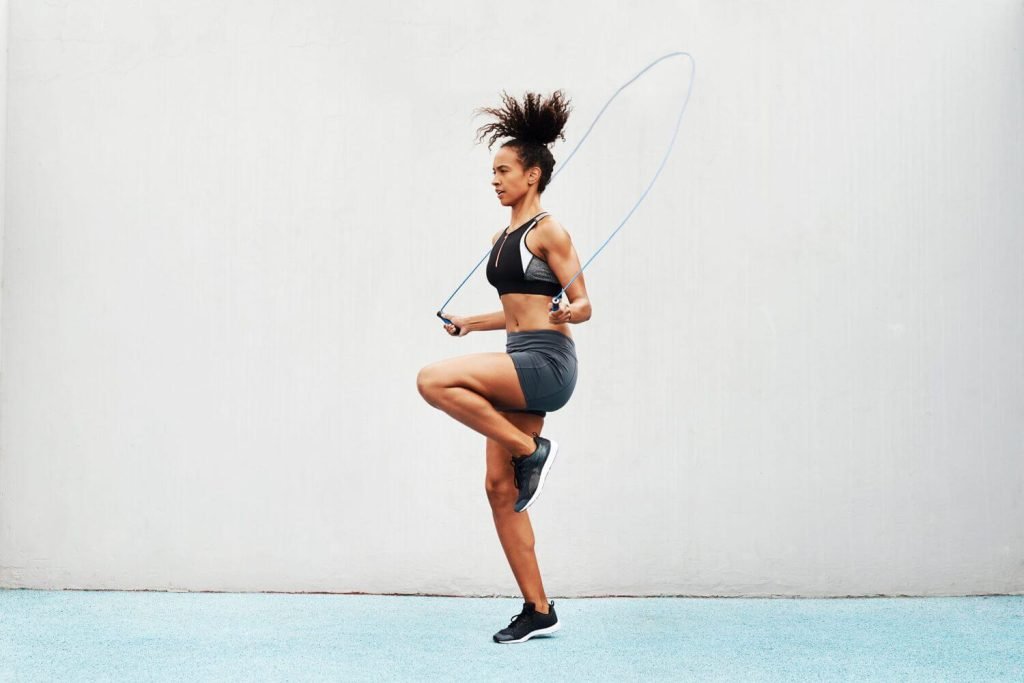
Jumping rope, also known as skipping, is a highly effective and versatile exercise for weight loss. It provides numerous benefits for cardiovascular fitness, calorie burn, and overall body toning.
One of the key advantages of jumping rope for weight loss is its ability to burn a significant number of calories in a relatively short amount of time. Jumping rope is a high-intensity exercise that engages multiple muscle groups, including the legs, core, and arms. This full-body workout results in an elevated heart rate and increased metabolism, leading to enhanced calorie burn. On average, jumping rope can burn around 600-1000 calories per hour, depending on factors such as intensity, duration, and individual body weight.
Jumping rope is a convenient and accessible exercise that can be performed almost anywhere. All you need is a jump rope and enough space to swing it. Whether you prefer to jump rope in your backyard, at the gym, or even in your living room, it offers a portable and time-efficient option for incorporating exercise into your daily routine.
Additionally, jumping rope is a great cardiovascular exercise that improves cardiovascular endurance and stamina. The repetitive nature of jumping rope challenges your cardiovascular system, strengthening your heart and lungs. Regularly engaging in this activity can enhance your overall fitness level and support better cardiovascular health.
Another benefit of jumping rope is its impact on muscle toning and coordination. Jumping rope requires coordination, balance, and quick reflexes, which helps improve motor skills and overall body coordination. It also engages various muscles, including the calves, thighs, glutes, shoulders, and core, resulting in improved muscle tone and definition over time.
Jumping rope can be customized to suit different fitness levels and goals. You can adjust the intensity by varying your jumping speed, incorporating different jump rope techniques (such as single-leg jumps or double unders), or combining jumping rope with other exercises like burpees or squats for added challenge. As you become more proficient, you can increase the duration and complexity of your jump rope workouts to further challenge your muscles and cardiovascular system.
It’s important to choose the right jump rope and ensure proper form when jumping. Select a rope that is appropriate for your height and skill level. Maintain good posture, land softly on the balls of your feet, and keep your jumps controlled and consistent. Gradually increase the duration and intensity of your jumps as your fitness improves.
In conclusion, jumping rope is an effective exercise for weight loss that offers a range of benefits for cardiovascular fitness, calorie burn, and muscle toning. Its simplicity, portability, and versatility make it an accessible option for individuals of all fitness levels. By incorporating regular jump rope sessions into your workout routine and gradually progressing the intensity and duration, you can optimize weight loss, improve cardiovascular endurance, and achieve a more toned and fit physique.
Best Exercises for Muscle Gain
When it comes to building muscle, incorporating a variety of compound exercises that target multiple muscle groups is crucial. Here are five of the best exercises for muscle gain:
1. Squats
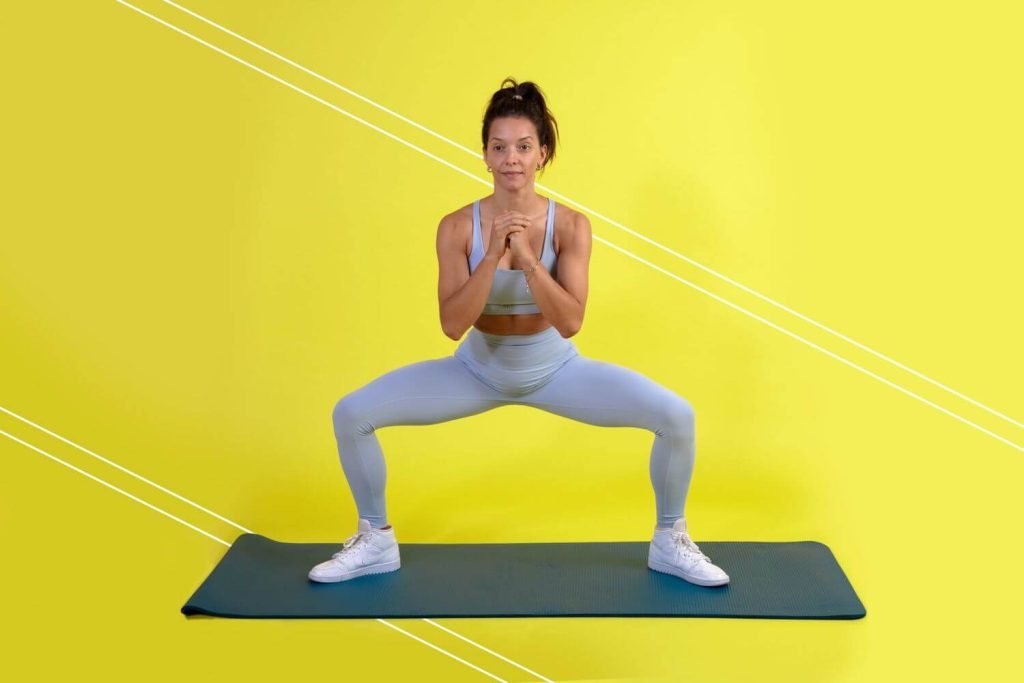
Squats are one of the most effective exercises for building muscle and strength, particularly in the lower body. They primarily target the quadriceps, hamstrings, and glutes, but also engage other muscles such as the core, calves, and lower back.
Squats can be performed with various equipment, including barbells, dumbbells, kettlebells, or simply using your bodyweight. The exercise involves bending at the knees and hips while maintaining an upright posture, then returning to a standing position. Proper form is essential to ensure maximum muscle activation and minimize the risk of injury.
The quadriceps, located at the front of the thigh, are the primary muscles targeted during squats. As you descend into the squat, these muscles work to extend the knee joint. The hamstrings, located at the back of the thigh, also play a significant role in the exercise, particularly during the upward phase when they assist in extending the hips. The glutes, including the gluteus maximus, medius, and minimus, are heavily activated during squats and contribute to hip extension and stabilization.
In addition to the major muscle groups, squats engage the core muscles to maintain stability and balance throughout the movement. The abdominal muscles, including the rectus abdominis and obliques, as well as the muscles of the lower back, help stabilize the spine and maintain proper posture during squats.
Squats are a compound exercise, meaning they involve multiple joints and muscle groups working together. This not only promotes muscle growth but also increases overall strength and functional fitness. The exercise also stimulates the release of anabolic hormones, such as testosterone and growth hormone, which play a crucial role in muscle development and repair.
To perform squats effectively, it’s important to start with a proper warm-up, including dynamic stretches and mobility exercises for the lower body. Gradually progress by adding resistance or weight as your strength increases. Focus on maintaining proper form, such as keeping your knees aligned with your toes, maintaining a neutral spine, and lowering yourself to a depth that allows your thighs to become parallel to the ground or slightly below.
Variations of squats, such as front squats, goblet squats, or Bulgarian split squats, can be incorporated to target specific muscle groups or add variety to your training routine. Additionally, adjusting the tempo, such as performing slow and controlled squats or incorporating explosive jumps (plyometric squats), can provide different training stimuli and further challenge your muscles.
In conclusion, squats are a highly effective exercise for building muscle and strength, particularly in the lower body. They target the quadriceps, hamstrings, and glutes, while also engaging the core and other stabilizer muscles. By incorporating squats into your workout routine and progressively increasing the intensity, you can experience significant muscle gains and enhance your overall strength and functional fitness.
2. Deadlifts

Deadlifts are a powerful compound exercise that targets multiple muscle groups, making them a fundamental exercise for building strength and muscle mass. They primarily work the muscles of the lower back, glutes, hamstrings, and quadriceps. Additionally, deadlifts engage the muscles of the upper back, core, grip, and forearms, making them a highly effective full-body exercise.
The movement of a deadlift involves lifting a barbell or other weighted object from the ground while maintaining a neutral spine and proper form. As you perform the lift, the muscles of the lower back, particularly the erector spinae, work to extend the spine and maintain stability. The glutes and hamstrings are heavily activated as they contract to extend the hips and bring the weight to a standing position. The quadriceps also contribute to the lift by extending the knees.
Deadlifts are known for their ability to promote overall strength and muscle growth due to the high levels of muscular recruitment involved. They stimulate the release of anabolic hormones, such as testosterone and growth hormone, which are essential for muscle development and recovery. Deadlifts are also effective for enhancing grip strength, as you need a secure grip on the barbell throughout the lift.
Proper form is crucial when performing deadlifts to ensure optimal muscle activation and minimize the risk of injury. This includes maintaining a neutral spine, initiating the movement from the hips, keeping the barbell close to the body, and using the legs and hips to drive the lift. It’s essential to start with lighter weights and gradually progress as your strength and technique improve.
Variations of deadlifts, such as sumo deadlifts or Romanian deadlifts, can target specific muscle groups or accommodate different body types and mobility levels. Sumo deadlifts, with a wider stance and hands positioned inside the legs, emphasize the muscles of the inner thighs (adductors) and glutes. Romanian deadlifts, where the focus is on hip hinging and hamstring activation, can be beneficial for targeting the posterior chain.
Deadlifts should be performed as part of a well-rounded training program, alongside other exercises, to ensure balanced muscle development. It’s crucial to warm up adequately and use appropriate weights based on your strength and experience level. Consulting with a qualified trainer or strength coach can help ensure proper technique and provide guidance on incorporating deadlifts into your workout routine.
In conclusion, deadlifts are a highly effective compound exercise for building strength and muscle mass. They primarily target the muscles of the lower back, glutes, hamstrings, and quadriceps, while also engaging the muscles of the upper back, core, grip, and forearms. By incorporating deadlifts into your training regimen and progressively increasing the intensity, you can experience significant muscle gains, improved overall strength, and enhanced functional fitness.
3. Bench Press
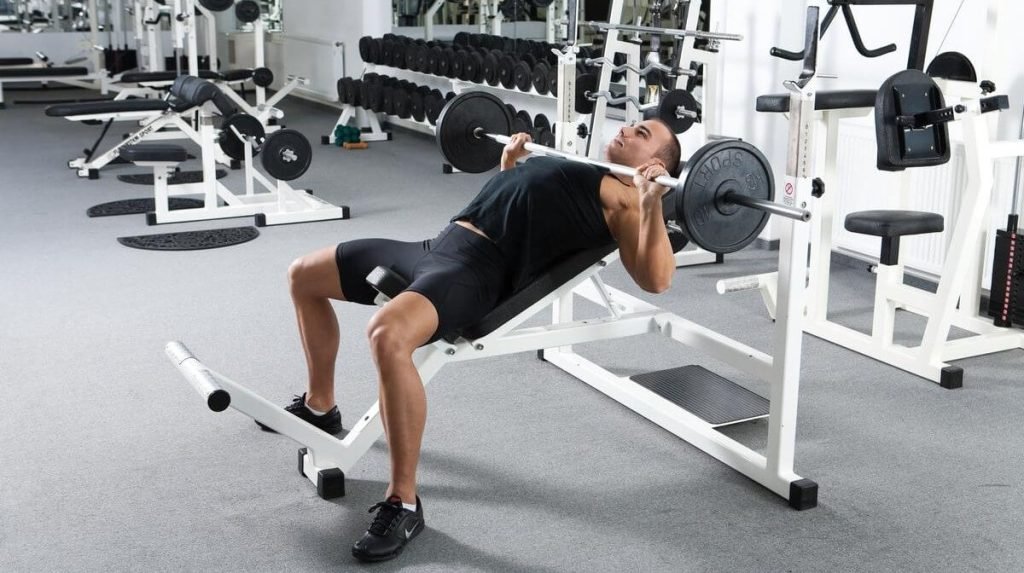
The bench press is a classic and highly effective exercise for building upper body strength and muscle mass. It primarily targets the chest muscles (pectoralis major and minor), shoulders (deltoids), and triceps, while also engaging the muscles of the upper back, core, and arms.
During a bench press, you lie on a flat bench and push a barbell or dumbbells upward from your chest to arm’s length. The pectoral muscles are the main movers in this exercise, working to horizontally adduct and extend the arms. The anterior deltoids contribute to the pressing motion, while the triceps act as synergistic muscles in extending the elbows.
The bench press can be performed using different grip widths, such as a wide grip for emphasizing the chest muscles or a narrower grip to target the triceps more intensely. Additionally, incline and decline bench press variations can be incorporated to target specific areas of the chest and shoulder muscles.
One of the primary benefits of the bench press is its ability to stimulate significant muscle growth in the upper body. It is a compound exercise that requires the coordination of multiple muscle groups, resulting in a high level of muscular recruitment and promoting overall strength development. The bench press also stimulates the release of anabolic hormones, such as testosterone, which play a crucial role in muscle hypertrophy.
In addition to muscle growth, the bench press helps improve upper body strength, functional pushing movements, and athletic performance. It enhances the stability and strength of the shoulder joints, which is important for various daily activities and sports.
Proper form and technique are essential when performing the bench press to ensure optimal muscle activation and prevent injuries. It is crucial to maintain a stable and flat back, engage the core for stability, and have a controlled range of motion throughout the exercise. Gradually increasing the weight and using a spotter or safety bars can provide added safety during heavy lifting.
It’s important to note that the bench press is not limited to barbells and can also be performed with dumbbells or using machines that replicate the movement. These variations can offer different muscle activation patterns and provide additional stability support.
To incorporate the bench press into your workout routine, it’s recommended to start with lighter weights and gradually increase the load as your strength and technique improve. It’s also beneficial to include other upper body exercises, such as rows and overhead presses, to maintain balanced muscle development.
In conclusion, the bench press is a highly effective exercise for building upper body strength and muscle mass. It primarily targets the chest, shoulders, and triceps while engaging other supporting muscle groups. By incorporating the bench press into your training program and progressing in weight and intensity over time, you can experience significant muscle gains, improved upper body strength, and enhanced overall fitness.
4. Overhead Press
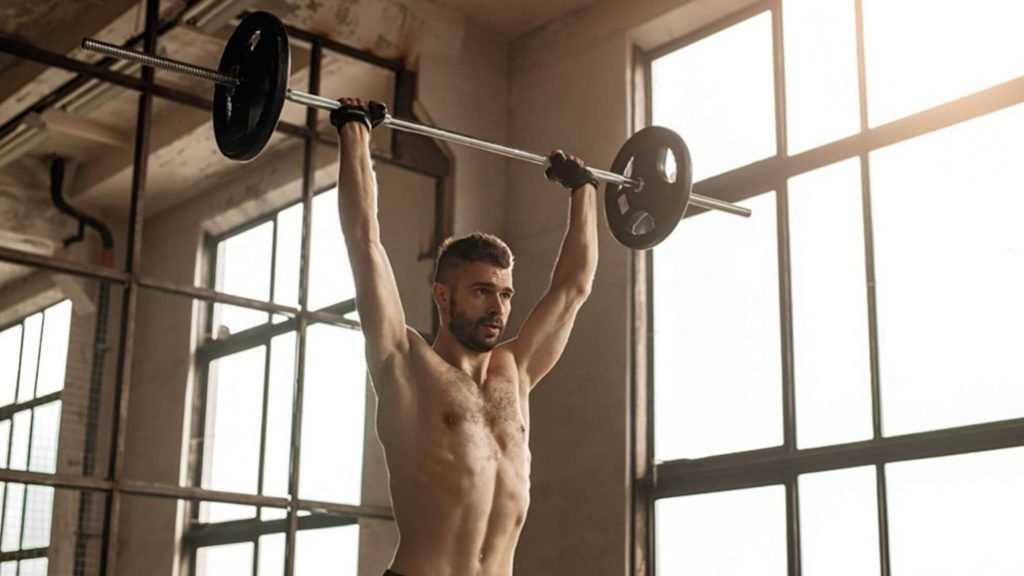
The overhead press, also known as the shoulder press or military press, is a highly effective exercise for developing strength and muscle in the shoulders, upper back, and arms. It primarily targets the deltoid muscles of the shoulders, along with the triceps and upper back muscles.
During the overhead press, you lift a barbell, dumbbells, or other weight overhead from shoulder level, extending the arms fully. The movement involves pressing the weight directly upward, engaging the shoulders and arms in a vertical pressing motion. This exercise requires stability and strength from the shoulders, as well as activation of the triceps for elbow extension and the upper back muscles for postural support.
The overhead press is a compound movement that recruits multiple muscle groups, making it an effective exercise for developing upper body strength and muscle mass. It stimulates the deltoids, particularly the anterior (front) and medial (side) heads, which contribute to shoulder flexion and abduction. The triceps are engaged as the arms extend overhead, and the upper back muscles, including the traps and rhomboids, work to stabilize the shoulders and maintain proper posture throughout the lift.
One of the key benefits of the overhead press is its ability to enhance shoulder strength and stability. It strengthens the muscles responsible for shoulder movement and helps develop better overall shoulder functionality. This can improve performance in other upper body exercises and everyday activities that involve pushing or lifting overhead.
The overhead press also promotes core stability and engagement. To perform the lift properly, you need to engage your core muscles to maintain a stable and upright posture, preventing excessive arching of the lower back. This adds an element of core strength and stability training to the exercise.
Variations of the overhead press can be incorporated to target different muscle groups or accommodate individual preferences and equipment availability. For instance, seated or standing variations can be performed, each offering unique benefits and challenges. Dumbbells, barbells, or even resistance bands can be used to perform the overhead press, allowing for versatility in training options.
To perform the overhead press effectively and safely, it’s crucial to start with a proper warm-up, including dynamic stretches and mobility exercises for the shoulders and upper back. Maintain proper form by keeping the core engaged, avoiding excessive arching of the lower back, and pressing the weight in a controlled manner. Gradually increase the weight as your strength and technique improve.
Incorporating the overhead press into your workout routine can help develop well-rounded upper body strength, improve shoulder stability, and enhance overall muscle mass. It’s recommended to include other exercises, such as rows and bench presses, to maintain a balanced upper body development.
In conclusion, the overhead press is a highly effective exercise for building strength and muscle in the shoulders, upper back, and arms. It targets the deltoids, triceps, and upper back muscles, while also engaging the core for stability. By incorporating the overhead press into your training program and progressively increasing the weight and intensity, you can experience significant improvements in shoulder strength, stability, and overall upper body development.
5. Pull-Ups/Chin-Ups

Pull-ups and chin-ups are exceptional exercises for building upper body strength and muscle mass, particularly targeting the back, biceps, and shoulders. They involve lifting your bodyweight by gripping an overhead bar and pulling yourself upward.
In pull-ups, the palms face away from you with a wider grip, while chin-ups have the palms facing towards you with a narrower grip. Both exercises engage the latissimus dorsi (lats), the largest muscles of the back, which contribute to the pulling motion. Additionally, the biceps brachii in the arms play a significant role in elbow flexion during these exercises.
Pull-ups and chin-ups are considered compound exercises as they involve multiple joints and engage various muscles simultaneously. They also require significant core engagement to stabilize the body during the movement. This results in a comprehensive upper body workout, strengthening the muscles of the back, arms, shoulders, and core.
One of the notable benefits of pull-ups and chin-ups is their scalability. They can be modified to suit different fitness levels by using assistance bands, machine-assisted variations, or even performing inverted rows as progressions. These modifications allow individuals to gradually build strength and work towards unassisted pull-ups or chin-ups.
Performing pull-ups and chin-ups challenges your muscles through a full range of motion, promoting muscle growth and enhancing overall upper body strength. They also help improve grip strength and contribute to better functional strength for activities that involve pulling or lifting your bodyweight.
It’s important to focus on proper form when performing pull-ups or chin-ups to ensure maximum muscle activation and reduce the risk of injury. Begin by hanging from the bar with your arms fully extended, engage your shoulder blades, and pull yourself upward, leading with the chest. Lower yourself back down in a controlled manner, maintaining tension in the muscles throughout the exercise.
If you’re unable to perform a full pull-up or chin-up initially, don’t get discouraged. Start with assisted variations and gradually decrease the assistance as you build strength. Consistency and gradual progression will lead to improvement over time.
Incorporating pull-ups or chin-ups into your workout routine can provide a balanced upper body workout, complementing other exercises such as push-ups or overhead presses. Aim to perform multiple sets with proper rest intervals, gradually increasing the number of repetitions or difficulty as you progress.
In conclusion, pull-ups and chin-ups are highly effective exercises for developing upper body strength and muscle mass. They primarily target the back, biceps, and shoulders, while also engaging the core. By incorporating these exercises into your training program and gradually progressing, you can experience significant improvements in upper body strength, muscle definition, and functional fitness.
Conclusion
In conclusion, the exercises mentioned, including high-intensity interval training (HIIT), running/jogging, cycling, swimming, and jumping rope, are all effective for weight loss. These exercises help burn calories, improve cardiovascular health, and increase overall fitness levels. It’s important to choose activities that you enjoy and can incorporate into your routine consistently.
For muscle gain, exercises like squats, deadlifts, bench press, overhead press, and pull-ups/chin-ups are highly beneficial. These compound movements target major muscle groups, stimulate muscle growth, and enhance overall strength and functionality. Consistency, proper form, and progressive overload are key factors in maximizing muscle gains.
Remember, a balanced approach that combines cardiovascular exercises with strength training is ideal for achieving both weight loss and muscle gain goals. Additionally, maintaining a healthy diet, adequate rest, and proper recovery are important factors in supporting your fitness journey. It’s always advisable to consult with a healthcare professional or certified trainer to tailor a workout plan that suits your individual needs and goals. Stay dedicated, stay motivated, and enjoy the process of improving your fitness and well-being.
